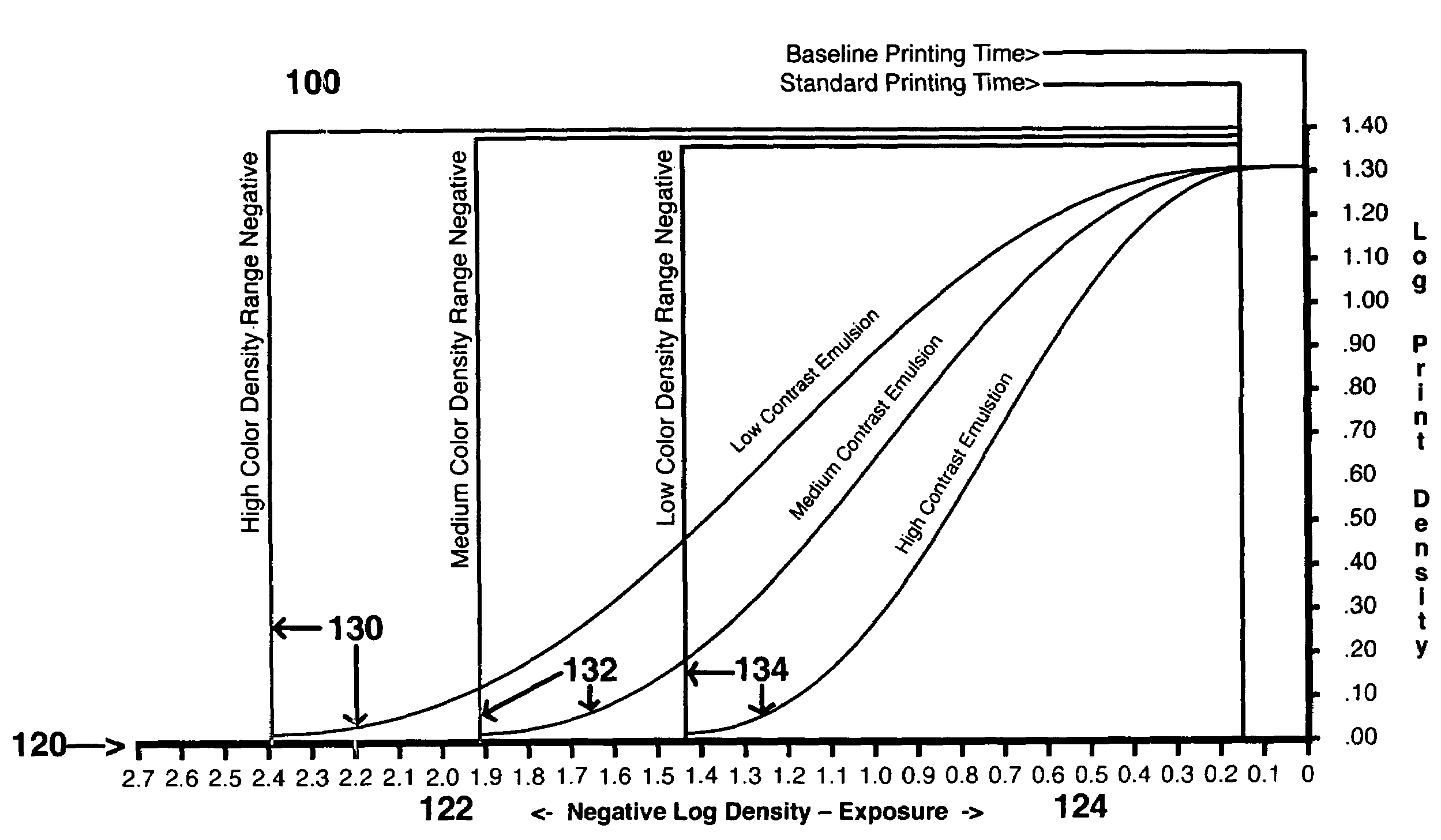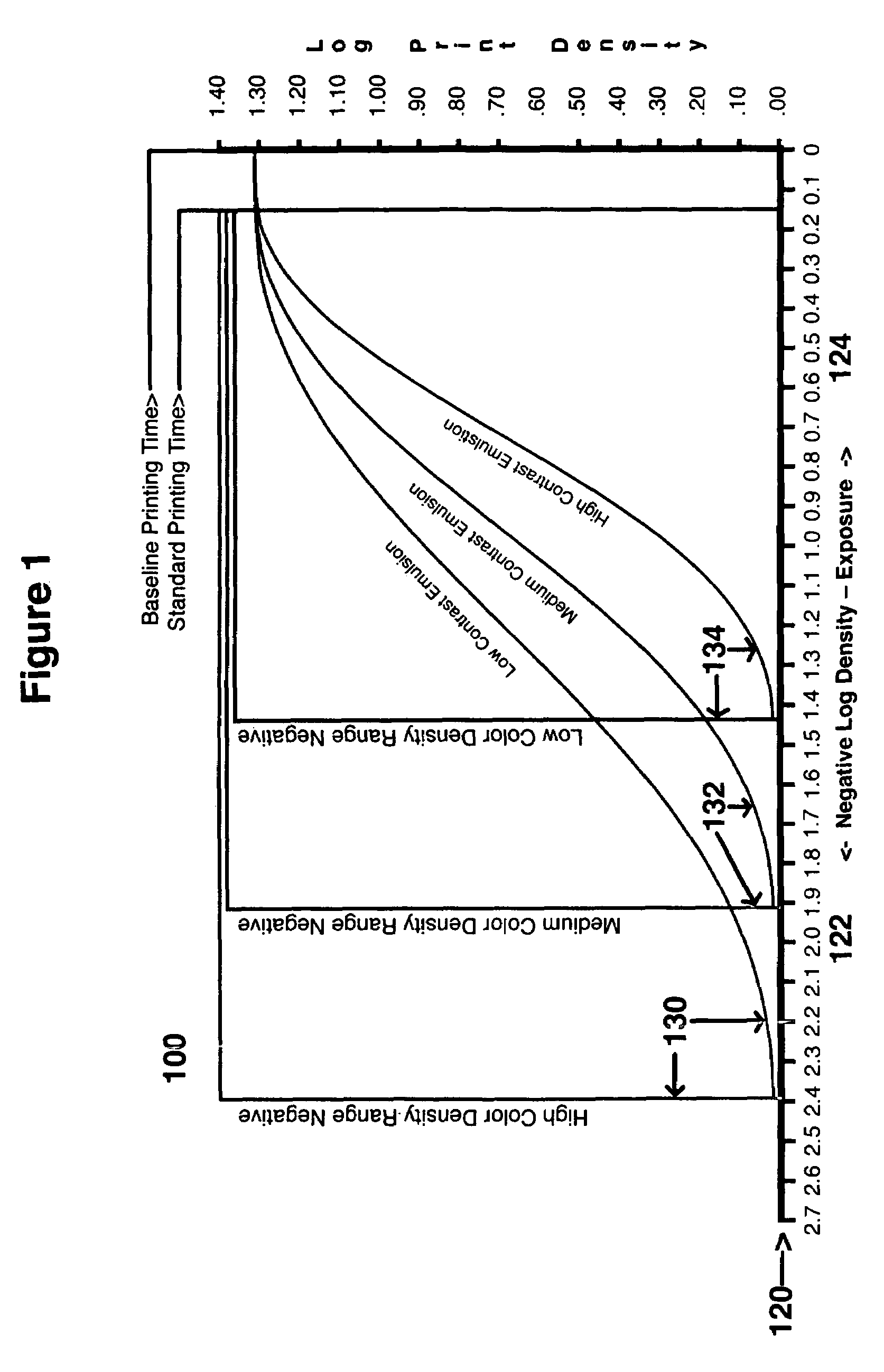Density range control in a photograph by variation of hue density range of the negative
- Summary
- Abstract
- Description
- Claims
- Application Information
AI Technical Summary
Benefits of technology
Problems solved by technology
Method used
Image
Examples
Embodiment Construction
[0027]To achieve negative density range control by hue variation for contact printing photographic images, and the use of hue variation in the control of density range of direct exposure, in order to render a positive image on monochromatic papers and printing plates creates a greatly improved process for providing negatives or pictures. By hue is meant the color of the negative in contact printing or the color of light in direct exposure of positives. Color and hue may be used interchangeably herein.
[0028]The solution for better digital negatives controls negative density ranges. The method of controlling digital negative density ranges of this invention works with any of the 19th century processes and any modern processes that can be exposed by a Contact Printed Negative.
[0029]Instead of using the Curve Function to adjust the density range of the image negative, a far better negative can be made by converting the black and white negative image to a hue or color that prints with th...
PUM
 Login to View More
Login to View More Abstract
Description
Claims
Application Information
 Login to View More
Login to View More - R&D
- Intellectual Property
- Life Sciences
- Materials
- Tech Scout
- Unparalleled Data Quality
- Higher Quality Content
- 60% Fewer Hallucinations
Browse by: Latest US Patents, China's latest patents, Technical Efficacy Thesaurus, Application Domain, Technology Topic, Popular Technical Reports.
© 2025 PatSnap. All rights reserved.Legal|Privacy policy|Modern Slavery Act Transparency Statement|Sitemap|About US| Contact US: help@patsnap.com



